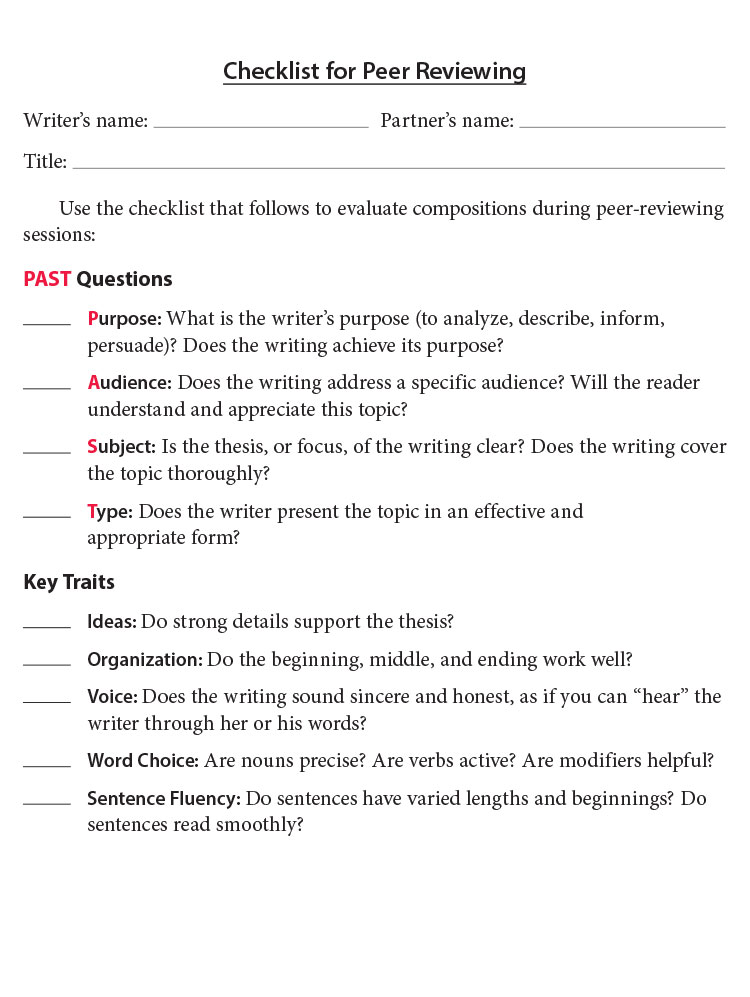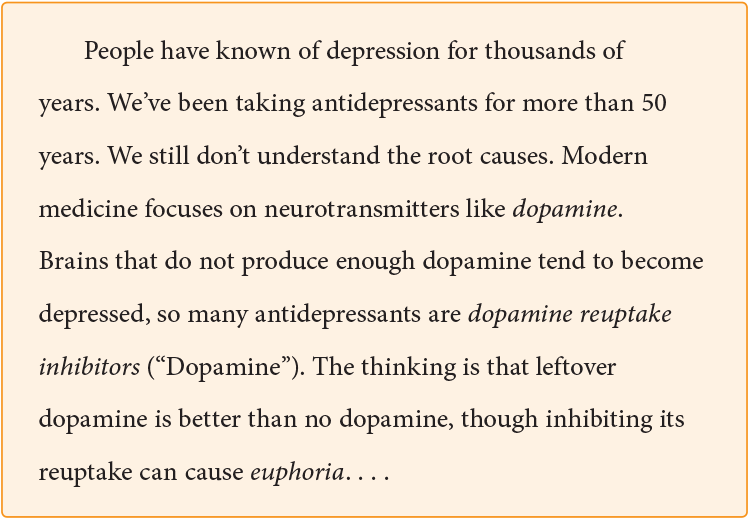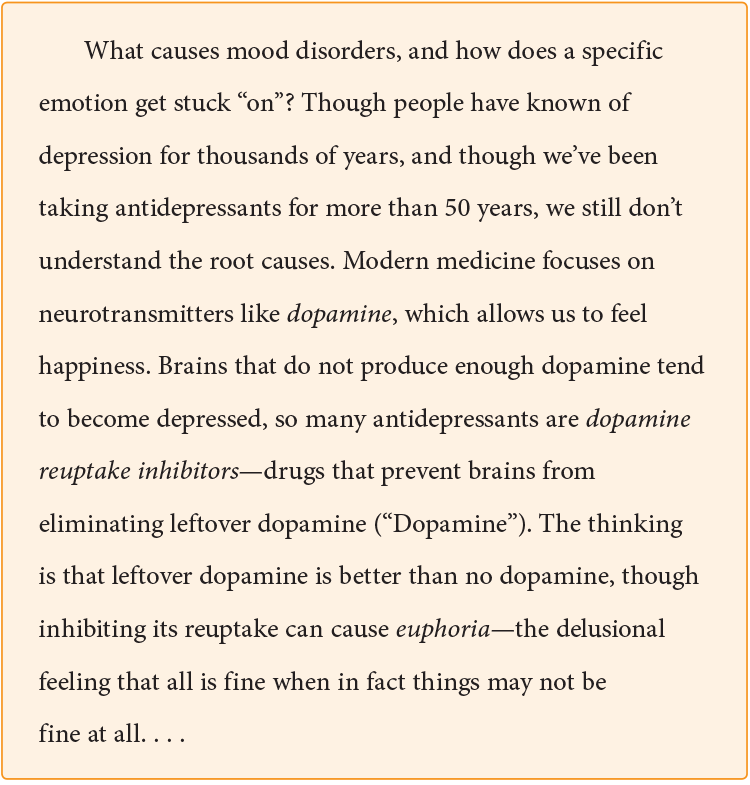Revising Problem-Solution Essays
Okay, you have your first draft. Congratulations! You might feel tempted just to spell-check it and hand it in, but remember that a great first draft is often a lousy final draft. Revision lets you make big improvements to your writing. In this lesson, you'll elaborate your key explanations and arguments, using transitions to connect ideas. You'll also use a peer response and a checklist to improve your work.
Revising to Elaborate Ideas
Whether you are analyzing a problem or arguing for a solution, you need to answer the reader's main questions. That means using a variety of different details at a variety of different levels. Imagine that you (the writer) are being interviewed by the reader:
Writer: First, let's be clear that depression is not mere sadness, and anxiety disorder is not just feeling butterflies before a test.
Reader: How is depression different from sadness, and how is anxiety disorder different from normal anxiety?
Writer: Negative emotions that accurately reflect a given situation are normal and healthy to feel. However, prolonged negative emotions that do not respond to specific circumstances can be debilitating and dangerous.
Reader: How can I tell when normal negative emotions become disorders?
Writer: Mayo Clinic defines major depressive disorder as "prolonged and persistent periods of extreme sadness" and defines seasonal affective disorder as "a form of depression most often associated with fewer hours of daylight in the far northern and southern latitudes from late fall to early spring" ("Mood Disorders"). The National Institute for Mental Health defines general anxiety disorder as "excessive anxiety or worry for months," often characterized by restlessness, irritability, fatigue, difficulty concentrating, muscle tension, and sleep problems ("Anxiety").
Reader: How are depression and anxiety disorders similar?
Writer: Both of these disorders interfere with school, work, relationships, and physical health. They also feed into each other. Psychologist Nancy B. Irwin puts it this way: "Being depressed often makes us anxious, and anxiety often makes us depressed" (Robinson).
Reader: How common are these disorders?
Writer: Both of these conditions are quite common. One out of ten Americans experienced a mood disorder in the last year, and nearly a quarter of all Americans will experience one during his or her lifetime ("Any").
Note how the writer answers "how is depression different from sadness?" with an explanation, and "how can I tell when normal negative emotions become disorders?" with a series of definitions. He answers "how are depression and anxiety disorders similar" with comparisons, and "how common are these disorders?" with statistics. By using different types of details in different levels of specificity, the writer fully explains the topic for the reader.
Elaborate explanations and arguments.
Print out your problem-solution essay and place a piece of paper covering the first middle paragraph. Slide the paper down to let you read the first sentence in that paragraph. Write down a question you would ask as reader. Slide the paper down and read further. At the end of another sentence, ask another question that occurs to you. Keep reading your essay and writing questions. Then review your list of questions, making sure you answered them. Add a variety of details to elaborate your ideas.
Teaching Tip
This activity works even better for partners. Have partners trade essays, cover the middle paragraphs, and write reader's questions as they read through the explanations and arguments. Then have partners return the essays and the list of questions so that writers can revise to answer the questions.
Revising to Use Transitions and Key Words
So, you've created the bones and muscles of your essay, but sometimes what you need are tendons and ligaments. Transitions and key words can help you connect ideas. Thankfully, the reader's questions you wrote in the last activity can suggest words, phrases, and clauses you can use:
Writer: First, let's be clear that depression is not mere sadness, and anxiety disorder is not just feeling butterflies before a test.
Reader: How is depression different from sadness, and how is anxiety disorder different from normal anxiety?
Writer: Negative emotions that accurately reflect a given situation are normal and healthy to feel. However, prolonged negative emotions that do not respond to specific circumstances can be debilitating and dangerous.
Reader: How can I tell when normal negative emotions become disorders?
Writer: Mayo Clinic defines major depressive disorder as "prolonged and persistent periods of extreme sadness" and defines seasonal affective disorder as "a form of depression most often associated with fewer hours of daylight in the far northern and southern latitudes from late fall to early spring" ("Mood Disorders"). The National Institute for Mental Health defines general anxiety disorder as "excessive anxiety or worry for months," often characterized by restlessness, irritability, fatigue, difficulty concentrating, muscle tension, and sleep problems ("Anxiety").
Reader: How are depression and anxiety disorders similar?
Writer: Both of these disorders interfere with school, work, relationships, and physical health. They also feed into each other. Psychologist Nancy B. Irwin puts it this way: "Being depressed often makes us anxious, and anxiety often makes us depressed" (Robinson).
Reader: How common are these disorders?
Writer: Both of these conditions are quite common. One out of ten Americans experienced a mood disorder in the last year, and nearly a quarter of all Americans will experience one during his or her lifetime ("Any").
Use transitions and key words.
Review the reader's questions from the last activity. Underline key words and transitions you can use to connect your ideas. Incorporate some where needed to smooth the flow of your essay. Review your entire work, looking for other places than need transitions or key words and add them.
Revising with a Peer Response
Share your writing.
Have a trusted classmate read your problem-solution essay and complete the form. Make a copy of this Google doc or download a Word template.

Revising in Action
When you revise, you add, delete, rewrite, and rearrange your writing to make it clearer. Here are some revisions to "Anxiety and Depression."
Revise with a checklist.
As you revise your problem-solution essay, ask yourself the questions on this checklist. When you can answer a question yes, check it off. Continue revising until all questions are checked off. Make a copy of this Google doc or download a Word template.
- Does the beginning capture the reader's attention and present a clear opinion statement?
- Do the first middle paragraphs analyze the problem, using a variety of details to answer readers' questions?
- Do the later middle paragraphs propose and argue for a specific solution, using reasons and other convincing details?
- Does the ending review the problem and solution and encourage the reader to agree or take action?
- Does the argument use strong logic and reasons?
- Is the voice analytical when treating the problem and persuasive when arguing for the solution?
- Do sentences read smoothly and vary in lengths and beginnings?


